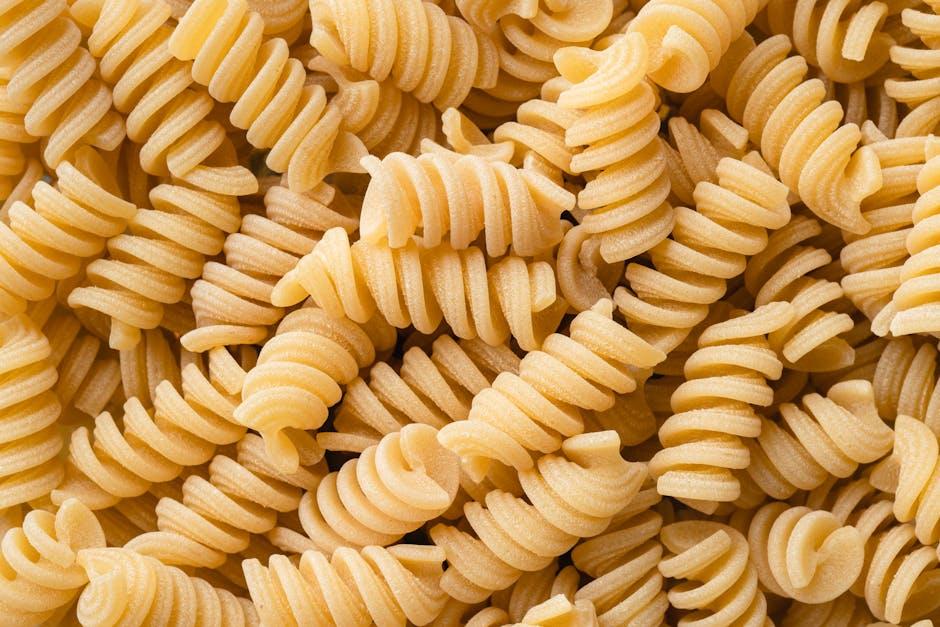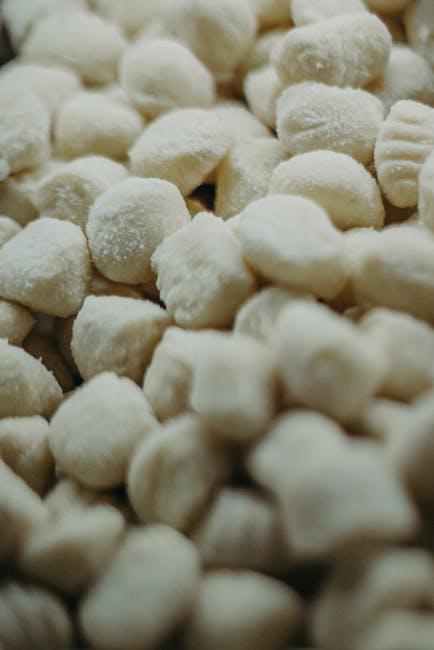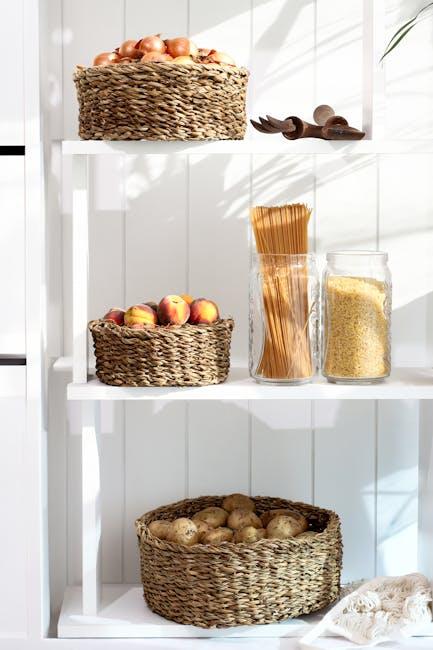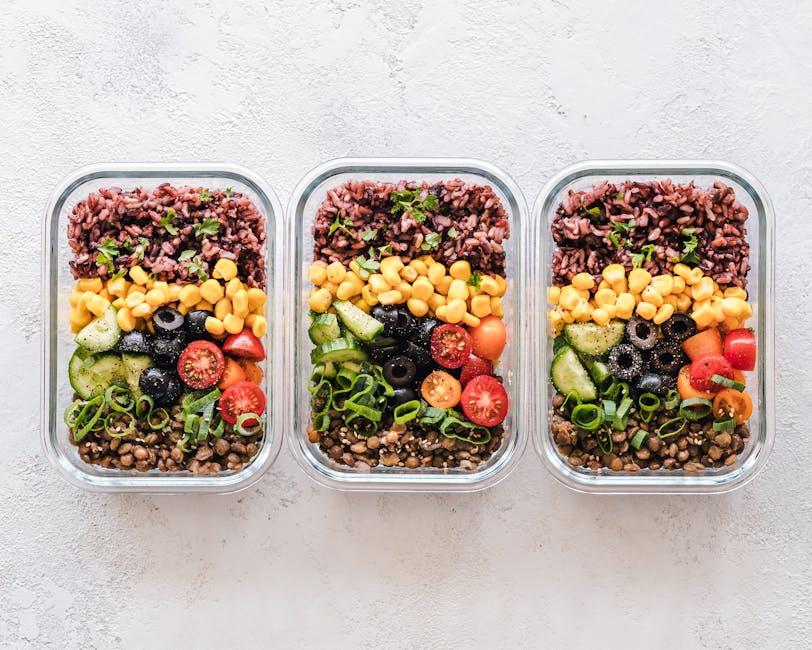In the hustle and bustle of modern life, finding time to prepare healthy, satisfying meals each day can feel like a daunting challenge. That’s where the art of meal prepping transforms from a mere kitchen task into a practical lifeline. By dedicating a little time upfront, you can effortlessly navigate the week ahead with nourishing dishes ready to go. This article delves into essential meal prep tips designed to simplify your cooking routine, reduce stress, and help you maintain a balanced diet throughout the week-turning mealtime from a scramble into a seamless experience.
Choosing Versatile Ingredients for Balanced Meals

Opting for ingredients that effortlessly adapt to various dishes transforms the preparation process into a smooth and enjoyable experience. Focus on staples like quinoa, sweet potatoes, and canned beans-they serve as the perfect blank canvas, ready to absorb a spectrum of flavors from spicy sauces to fresh herbs. Incorporating a mix of proteins, crisp vegetables, and whole grains ensures every meal packs a punch of nutrition, while also keeping the palette interested and vibrant throughout the week.
Consider the following versatile ingredient choices that balance nutrients and enhance meal prep efficiency:
- Quinoa: Rich in protein and fiber, ideal for salads, bowls, and stir-fries.
- Chicken breast: Lean and easily flavored to fit various cuisines.
- Frozen vegetables: Time-savers that maintain nutrients and texture.
- Chickpeas: Perfect for roasting, blending, or tossing into stews.
| Ingredient | Benefits | Meal Ideas |
|---|---|---|
| Brown Rice | High in fiber, energy-sustaining | Bowls, fried rice, side dishes |
| Salmon | Omega-3 rich, heart-healthy | Grilled fillets, salads, wraps |
| Spinach | Iron-packed, versatile greens | Smoothies, sautés, omelets |
Mastering Batch Cooking to Save Time and Effort

Efficiency is the key when it comes to batch cooking, transforming your kitchen into a well-oiled meal-prep machine. By dedicating just a few hours each week, you can prepare multiple meals that free up precious time on busy days. Focus on selecting versatile ingredients that can be used across different dishes-think grains like quinoa or brown rice, proteins such as chicken or lentils, and a variety of roasted or steamed vegetables. Don’t forget to invest in quality storage containers; sealing freshness is just as important as the cooking itself.
Implementing a simple system will make your batch cooking experience smoother. Try this quick checklist to get started:
- Plan meals around a central protein that can be flavored two or three ways
- Cook ingredients that have similar cook times together to save energy
- Portion meals in advance using labeled containers or freezer bags
- Use clear lids or labels to identify meals without opening every container
- Schedule a weekly review to creatively rotate your ingredients and meals
| Batch Cooking Element | Example | Storage Tip |
|---|---|---|
| Grains | Quinoa, Brown Rice | Store in airtight jars for quick use |
| Protein | Grilled Chicken, Lentils | Freeze in meal-sized portions |
| Vegetables | Roasted Bell Peppers, Steamed Broccoli | Keep refrigerated in moisture-controlled containers |
Smart Storage Solutions to Keep Food Fresh

Investing in smart storage containers can transform your meal prep routine, keeping your ingredients fresher for longer and reducing food waste. Opt for airtight, BPA-free containers with removable compartments to separate sauces from solids, preserving textures and flavors. Glass containers with locking lids not only prevent leaks but also withstand oven and microwave use, allowing you to heat meals without transferring them to another dish. Labeling each container with the date of preparation helps you rotate meals efficiently and enjoy them at their peak freshness.
Freezing isn’t the enemy of freshness if done correctly; blanch vegetables before freezing to lock in nutrients and color, and use vacuum-sealed bags to limit air exposure. Here’s a quick guide to ideal storage durations:
| Food Type | Refrigeration | Freezing |
|---|---|---|
| Cooked Meat | 3-4 days | 2-3 months |
| Vegetables | 1 week | 8-12 months |
| Soups & Stews | 3-4 days | 2-3 months |
- Keep leafy greens wrapped in paper towels to absorb excess moisture.
- Store herbs like fresh flowers: trim stems and place them in water inside a jar.
- Use breathable produce bags for fruits to avoid premature spoilage.
Easy Flavor Boosters to Elevate Your Weekly Menu

Simple ingredients can transform even the most basic meals into something special. Think beyond salt and pepper by experimenting with fresh herbs like basil, cilantro, or mint. A sprinkle of smoked paprika or a dash of chili flakes can add warmth and depth without overpowering your dish. Citrus zest and juices (lemon, lime, or orange) inject a bright, tangy freshness that awakens the palate, making your meal feel vibrant and fresh every time you prep.
To keep your meals exciting throughout the week, consider these easy flavor boosters:
- Infused oils: Garlic or rosemary olive oil drizzled over roasted vegetables or grains.
- Quick pickles: Thinly sliced cucumbers or radishes in vinegar and sugar add crunch and acidity.
- Creative condiments: Swap mayo for avocado mash or try tahini for a nutty twist.
| Flavor Booster | Best For | Usage Tip |
|---|---|---|
| Fresh Herbs | Salads & Bowls | Add at the end of cooking |
| Smoked Paprika | Roasted Veggies | Sprinkle before roasting |
| Citrus Zest | Grains & Seafood | Mix into dishes right before serving |
Closing Remarks
As the week unfolds, having a well-prepared meal plan can transform daily dining from a rushed routine into a mindful moment. With these meal prep tips in hand, the path to nourishing, stress-free meals is clearer than ever. Remember, the art of meal prepping isn’t about perfection-it’s about creating a rhythm that works for you. So gather your ingredients, set your intentions, and let each prepared dish be a small act of care that carries you smoothly through the days ahead.











